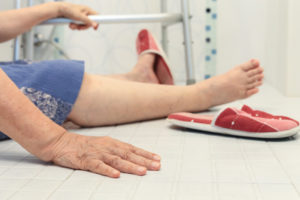A change in dosage
Last July, my physician said the government suggested people 65 and older on psychotropic drugs have their dosages decreased. My Valium dosage was OK at 3 milligrams (mg) a day, but he suggested my Zoloft be lowered to from 75 to 50 mg. The thought made me anxious. I was concerned the decrease would cause problems. My doctor assured me he would increase my dosage if needed, so I agreed.
I did experience the side effects of dyspepsia and loose stools, which were manageable. But in the back of my mind, I wondered if I had made a mistake. I rationalized by thinking that with less medication I could more quickly reach my goal weight of 140 pounds. But, in fact, my weight loss had already plateaued. That made my heart sink. In the months since, reducing the Zoloft has not resulted in any weight loss.
I noticed anxiety, particularly in the early morning, during the winter. I also frequently woke in the night breathing hard with my heart hammering. But since I am a vivid dreamer, I wrote it off to nightmares.
The power chair technicians came in April to make some minor adjustments to my almost one-year-old power chair. I wanted to raise the seat back 5 degrees so I would be farther forward. The joystick was much easier to reach. Almost immediately, my already stiff hips became stiffer because of the seating change. Standing became more difficult. I felt the seat needed to be changed back, but there was no way it could be done quickly. When I stood to transfer, my right hip would stiffen. Out of frustration, I bent and straightened my knees, which alarmed the aides. For safety reasons, I was required to be transferred with the Hoyer lift, as I wrote about last month.
Physical therapy started working with me to loosen up my right hip. They applied hot packs and did some stretching. The nurse manager wanted me to see the facility psychiatrist, so I did in early May. He said he felt it was a mistake my Zoloft had been decreased. He said it should instead be increased to 125 mg a day, but that much alarmed me. I asked him to wait, and he did.
I realized I was grumpier than usual and quite achy. Many factors could cause that, but I wondered if taking less Zoloft over many months was affecting me. A week later, I asked that my Zoloft be increased back to the 75 mg dosage I took prior to last July. I hoped it might ease my anxiety and possibly relieve some of the stiffness. I knew the aides already thought I was crabbier and more difficult to deal with, so I was comfortable with my decision. I hoped the increase would bring me back to a more normal me.
The increase started more than two weeks ago. There was not much to notice at first. Then, some nausea and gastrointestinal discomfort. But a few days ago, I began to feel more calm. I know my body is still adapting to the Zoloft increase. I realize as I am getting stiffer as I age. Selective serotonin reuptake inhibitors (SSRI) antidepressants can also cause increased muscle spasticity for someone like me with neurological problems. That's why I want to keep standing. It allows me to stretch a bit.
Therapy dropped my seat back a bit to allow less strain on my hips, which has helped. Therapy is trying to find a different gait/transfer belt to allow me to stand to transfer. The first one they ordered was not strong enough and was returned. The second looks more like mountain climbing gear and is a bit restrictive. It has handholds at both my waist and my thigh that might help them—and me—feel more secure when I stand to transfer. Today, I tried the transfer belt with therapy. I am hoping it will work well for the aides so that I might be able to stand again.

Kathleen Mears is a long-time blogger who has been a nursing home resident for 21 years. She is an incomplete quadriplegic and uses a power wheelchair to get around. Her computer is her “window on the world.” This blog shares her thoughts and view of life as a nursing home resident as well as ideas of how it might be improved in the future.
Related Articles
Topics: Rehabilitation











